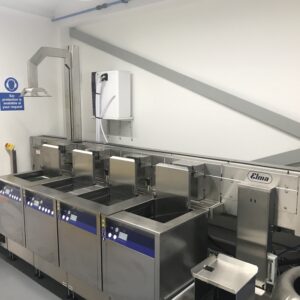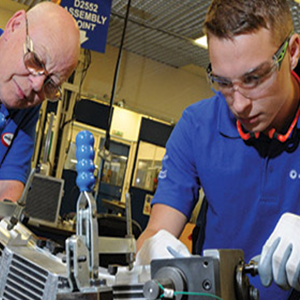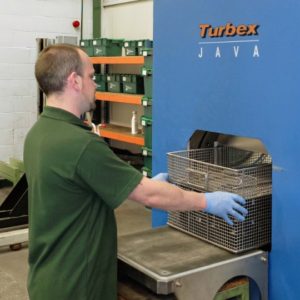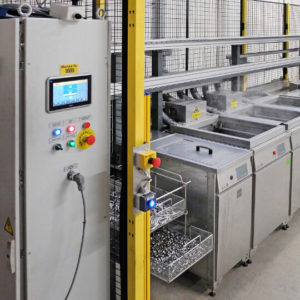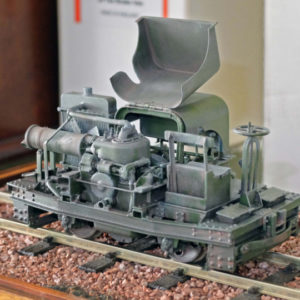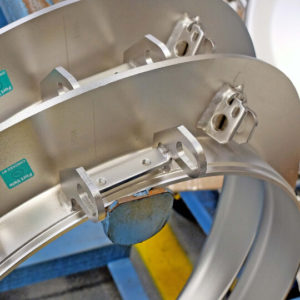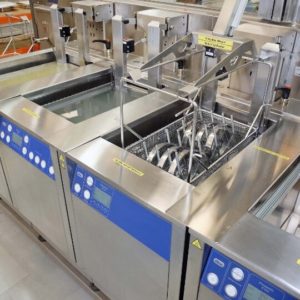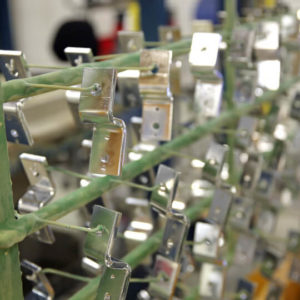Derbyshire-based Paul Fabrications, a Unitech Aerospace company, has for a long time used both aqueous and solvent systems to wash machined, pressed and fabricated stainless steel components for its customer, Springfields Fuels Limited, near Preston, which supplies fuel pellets for advanced gas-cooled reactors in the UK.
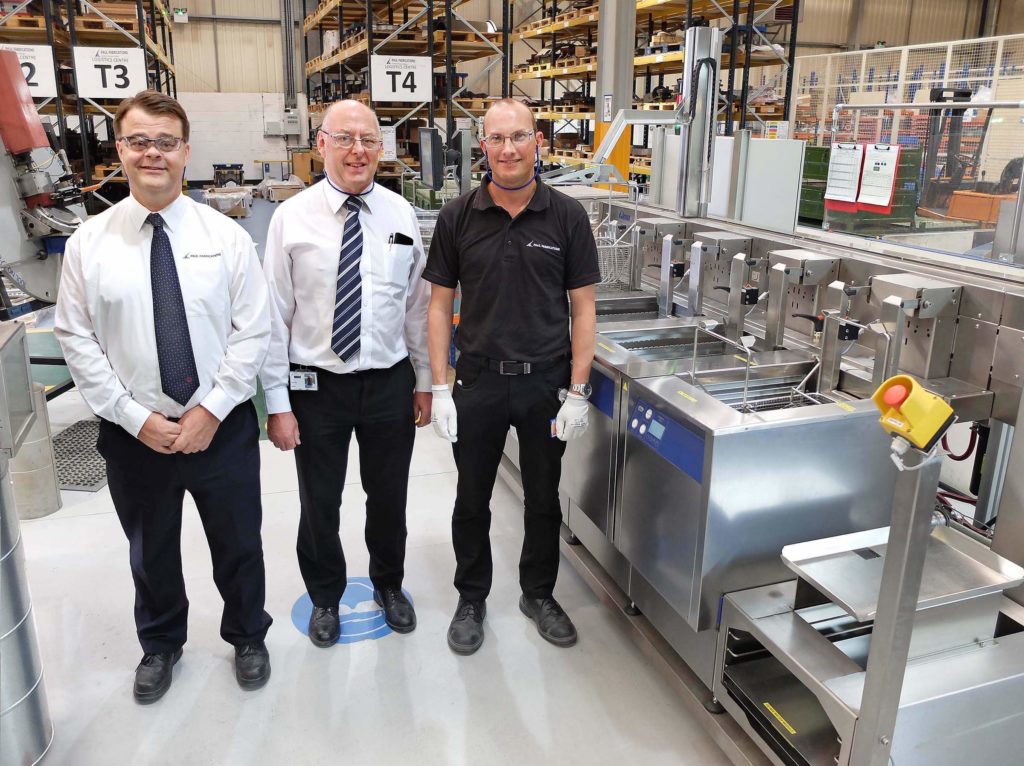
Paul Fabrications dispensed with solvent cleaning of nuclear components at the beginning of 2017, replacing it with a Turbex Pro 550 aqueous ultrasonic cleaning system.
The four-stage line is devoted to washing and drying all the nuclear components that support and hold the stainless steel tubes containing uranium fuel pellets in the core of advanced gas reactors in the UK. All these components were previously processed in a trichloroethylene closed system at the Castle Donington site.
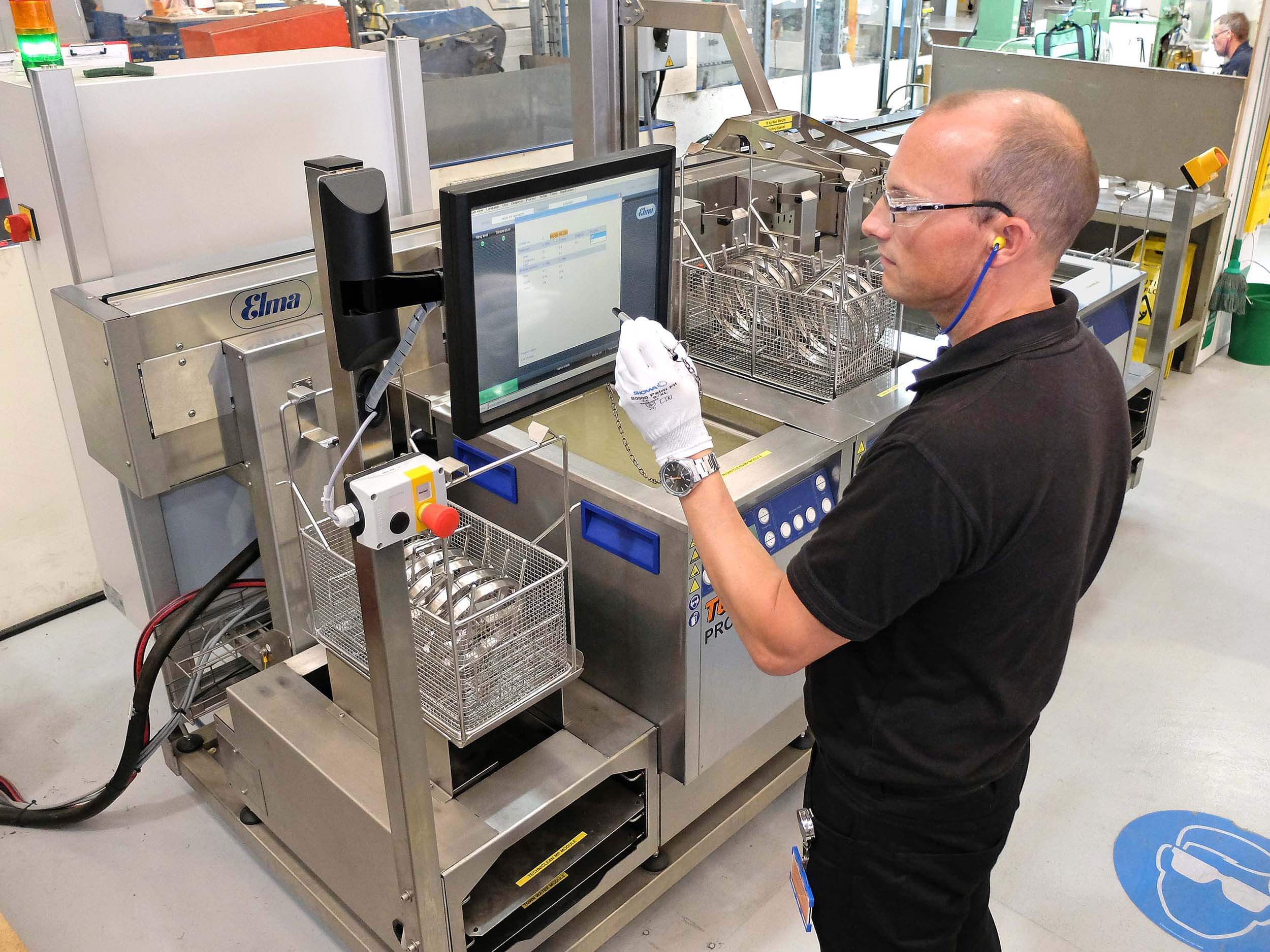
“We clean the associated braces, which are heavier components, in an aqueous spray washer but the other support components are too lightweight for processing in the same machine, as they would be distorted and damaged.
We had a number of trials carried out using different solvents, but all of them left some type of stain after the drying stage. This would mean the components being rejected or even scrapped.
We decided we needed an aqueous tank system that would perform the final clean on the stainless steel components to nuclear required standard, without damage. Paul Fabrications asked three potential suppliers to quote.”
Peter Tryner, Nuclear Operations Manager at Paul Fabrications
The Turbex system was installed after two days of successful trials at the supplier’s technical centre in Alton Hampshire. Mr Tryner also went to see similar equipment in use in electronics and medical equipment factories and spoke with their production staff, receiving positive feedback from everyone.
Soils that need to be removed from the rings are principally press oil and coolant from machining centres. There is no or negligible swarf, as this is blown off before cleaning. Particularly important is that all traces of surface impurity, especially chlorine, are removed. The Turbex equipment achieves what Mr Tryner describes as a medical level of cleanliness and has received Springfields Fuels’ validation to clean the components in this way.
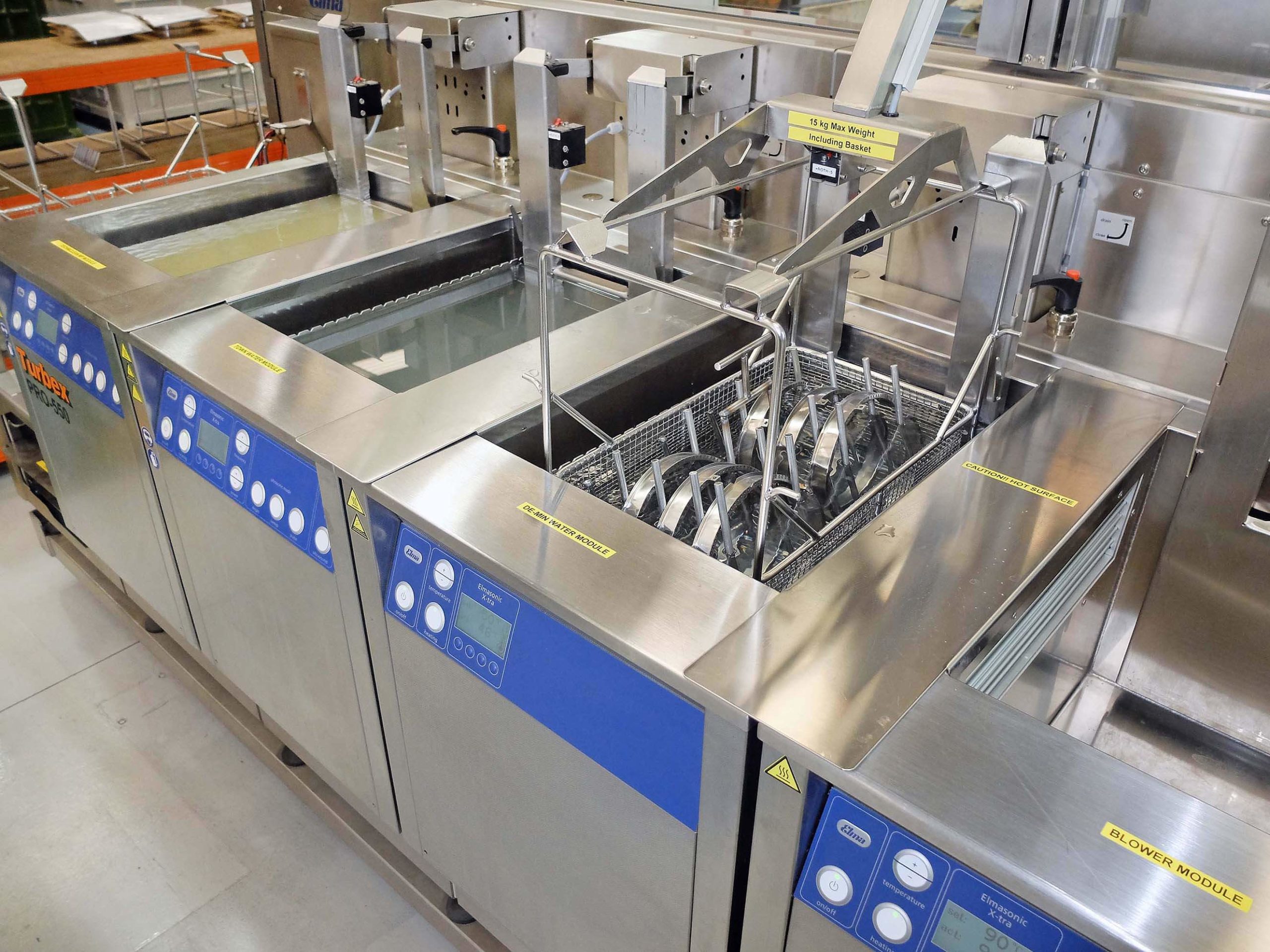
The primary wash stage, which contains water and detergent at 60°C, is equipped with an oil skimmer and a dual frequency ultrasonic transducer that provides ultra-fine, high precision cleaning performance. The next tank, also ultrasonic, holds tap water at ambient temperature for a secondary wash, while the third, rinse stage contains demineralised water at 60°C. The last stage is a blow drying oven set at 120°C.
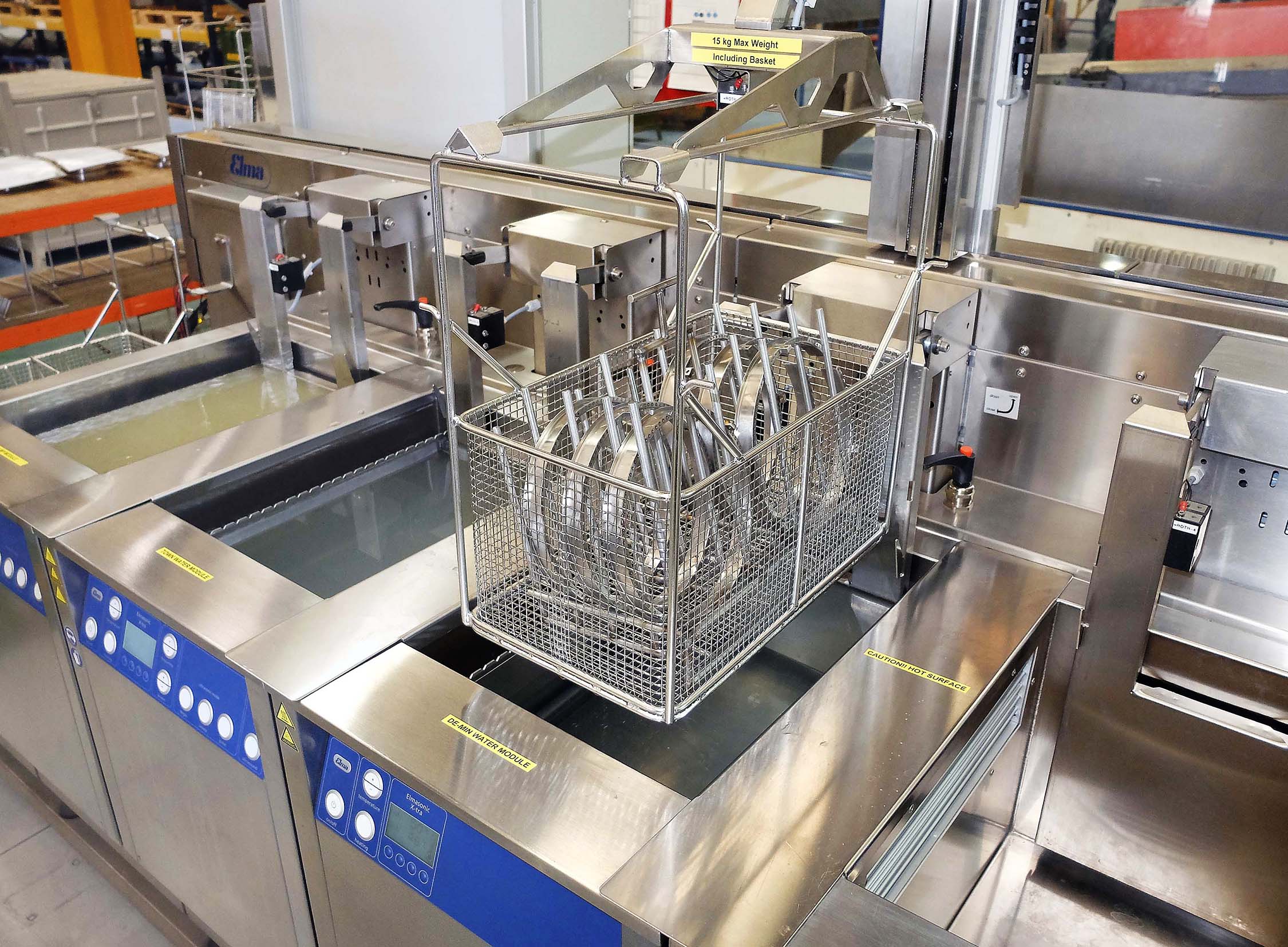
Batches of components are processed in stainless steel baskets, up to three of which can be in the system at the same time if throughput is high. Under program control, a transporter lifts a basket from the input station and automatically moves it from stage to stage along the line, immersing it in each tank for a predetermined time and finally depositing it onto the output table. Program length is typically from 15 to 40 minutes, according to component size and shape.
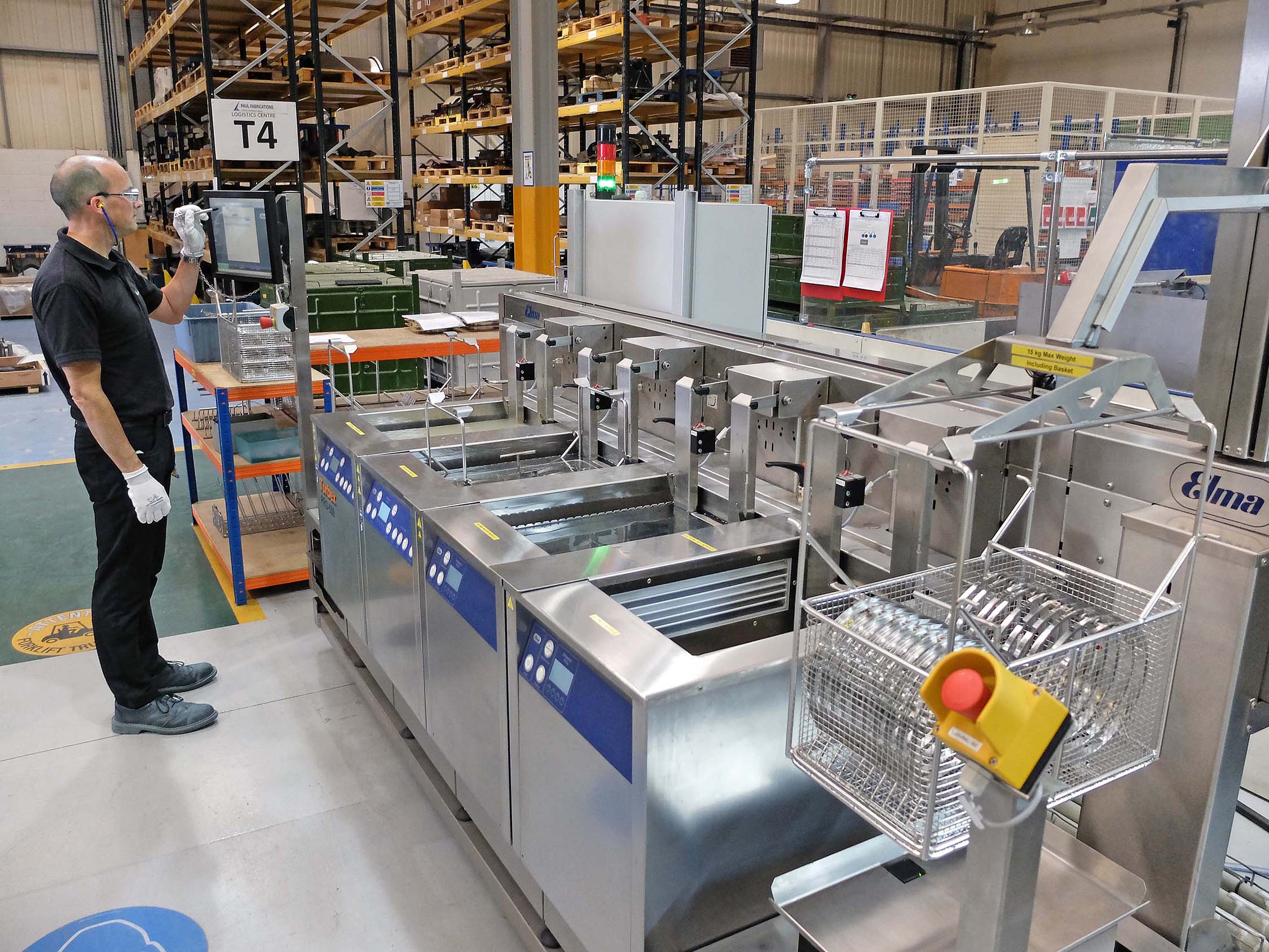
The level of cleanliness stipulated by Springfields Fuels requires Paul Fabrications to test the water every day. The rinse stage must have a conductance of less than 100 microsiemens, while the first tank is checked with a refractometer to ensure that the amount of detergent is correct, as stipulated by the customer.
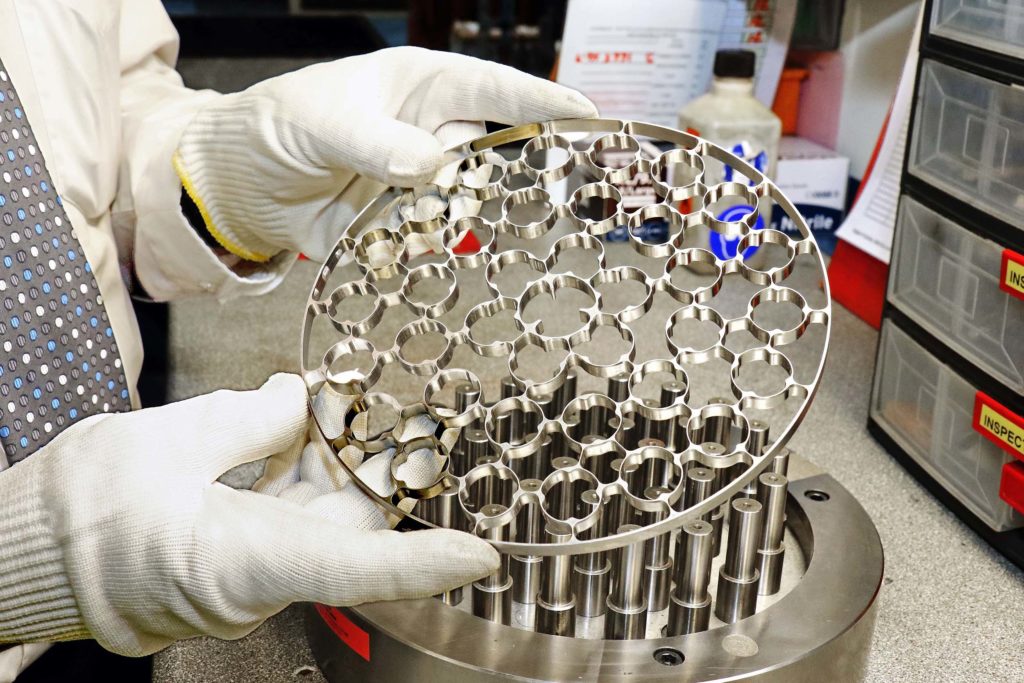
On receipt of the components and fabrications, Springfields Fuels visually inspects 20 per cent under magnification for cleanliness and also carries out dimensional checks to ensure that the drawing tolerances have been achieved.
In 2016, Paul Fabrications became the 100th UK manufacturing company to receive F4N accreditation through the Nuclear AMRC’s Fit For Nuclear programme.
Contact: John Huntingdon, Managing Director.
Email: john.huntingdon@turbex.co.uk

